In this post, we’ll be setting up a cheap ADS-B 1090 PCB antenna to track aircraft using SDR. Of course, it’s not going to cost much and might do a good job pulling in ADS-B aircraft tracking transmissions.
We’ll be using a fairly generic PCB antenna. These antennas can be purchased at various vendors. They range in price from about $2 to $8 USD, depending where they are purchased. I think it’s some kind of dipole. PCB(Printed Circuit Board) antennas have “traces” instead of wires. If you buy one of these, make sure all the SMA connections are properly soldered.
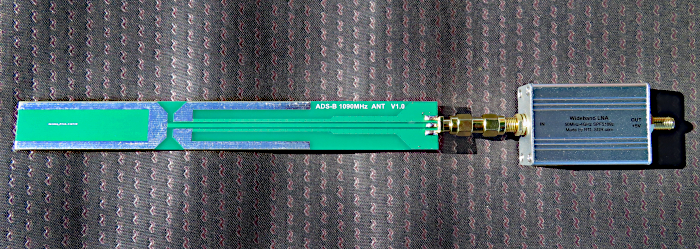
I have the RTL-SDR Wideband LNA, which is a simple low noise amplifier. It is powered by RTL-SDR dongle’s bias tee power. Basically, it boosts weak signals above background noise. It works best closer to the antenna, so in this case it works out perfect.
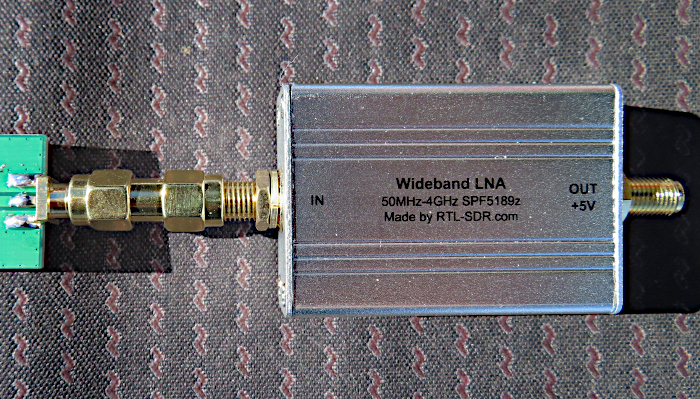
In a previous post, we presented some ideas on how to build a cheap PVC antenna, we are going to use it again here. We are trying out new stuff, you might think about something more permanent. A couple pieces of duct tape connect the PCB antenna and LNA to the PVC antenna mast.
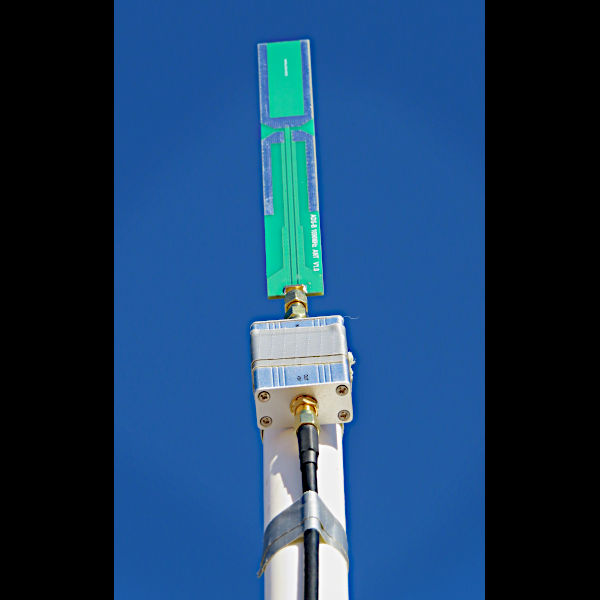
The PVC mast puts the antenna about ten feet in the air. The antenna could be used on a tripod or even a desktop, but it never hurts to get any antenna off the ground. My laptop computer and ham radio equipment is run by solar power.
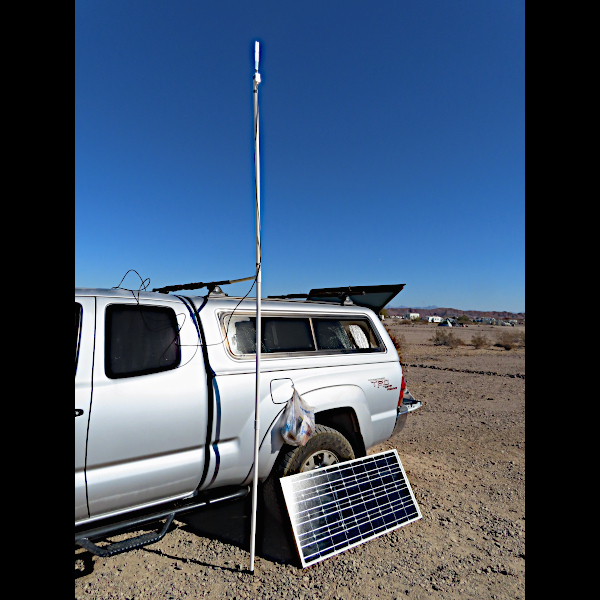
As I was setting up the antenna, there was plenty of aircraft in this busy flight corridor.
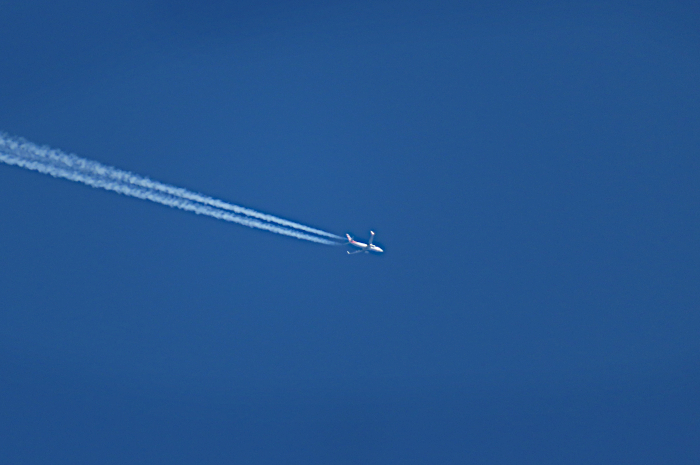
Hooked the antenna cable up to the RTL-SDR dongle and plugged it into the solar powered laptop. I usually start out with SDR++. I check the antennas on different software and compare the results.
Since it’s an ADS-B antenna, I start out at 1090 MHz where there is a strong signal. Looks good for the antenna, but SDR++ does not have an ADS-B demodulator, so to track aircraft, I need to use another program.
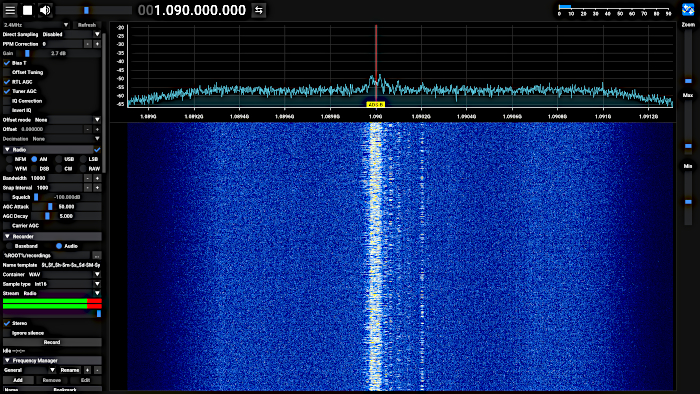
Before I switch software, I check out the local NOAA station, which I also use as a baseline test frequency.
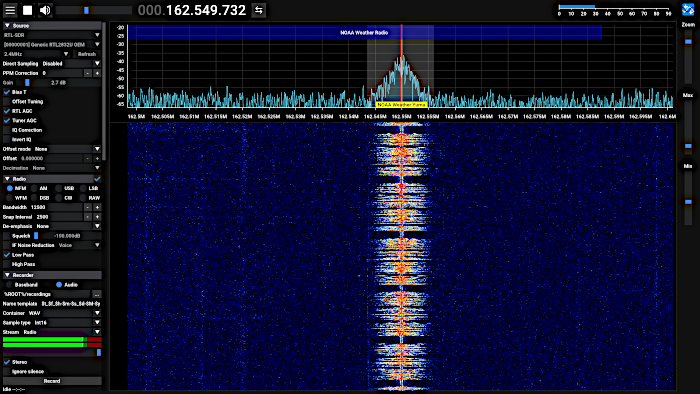
Coming in loud and clear. That’s good because aircraft hear the same thing.
I switch to SDRangel, which is my current favorite ADS-B tracking program. It doesn’t take long to see the PCB antenna is doing a pretty good job. The 15″ laptop screen is not quite big enough.
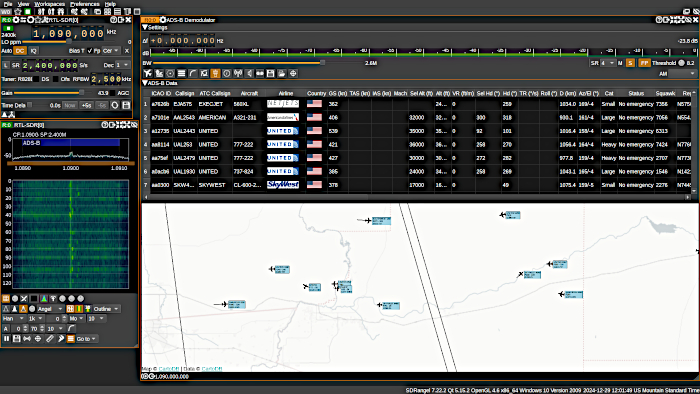
I was tracking aircraft from over 1200 km(745 mi) away. Not too bad. That’s pretty good results from an antenna that only costs a few dollars.
While I was fooling around with the PCB antenna, I checked out SDR Console, more SDR software. I got it to recognize the RTL-SDR receiver that had working signals, but I couldn’t see or hear anything. The odds are pretty good I’m missing something but it definitely looks promising.
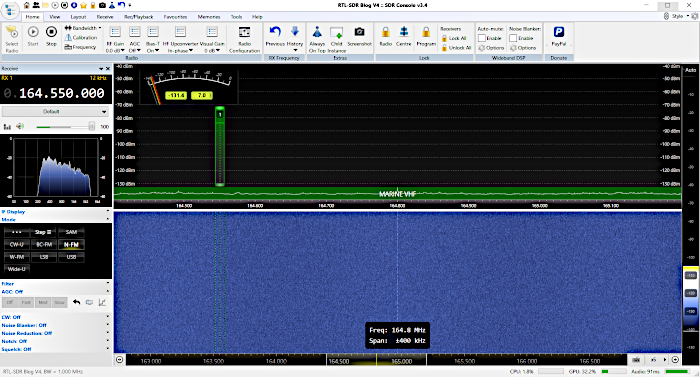
Pretty good results for very little cash. That’s what we like. More SDR stuff coming so check back soon!
